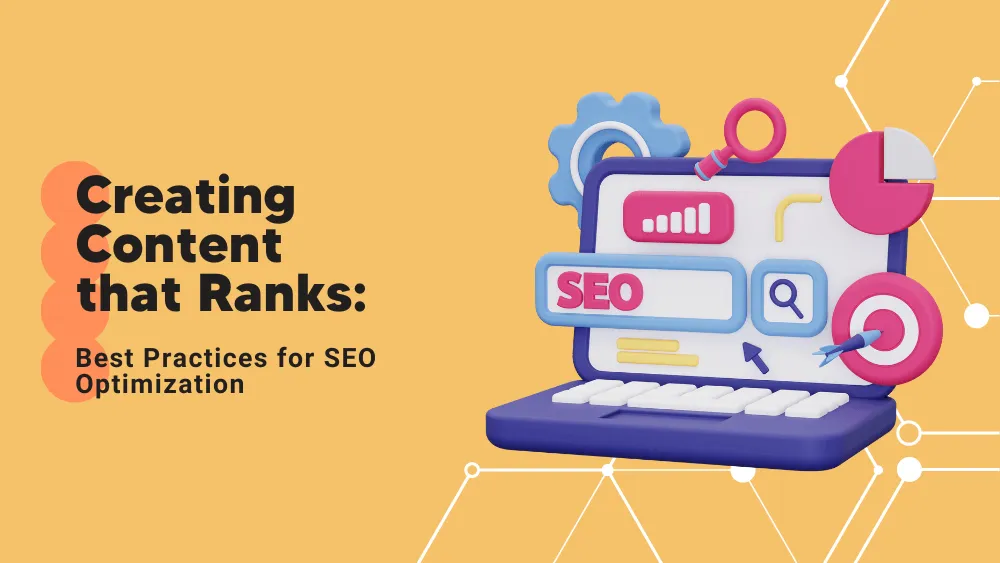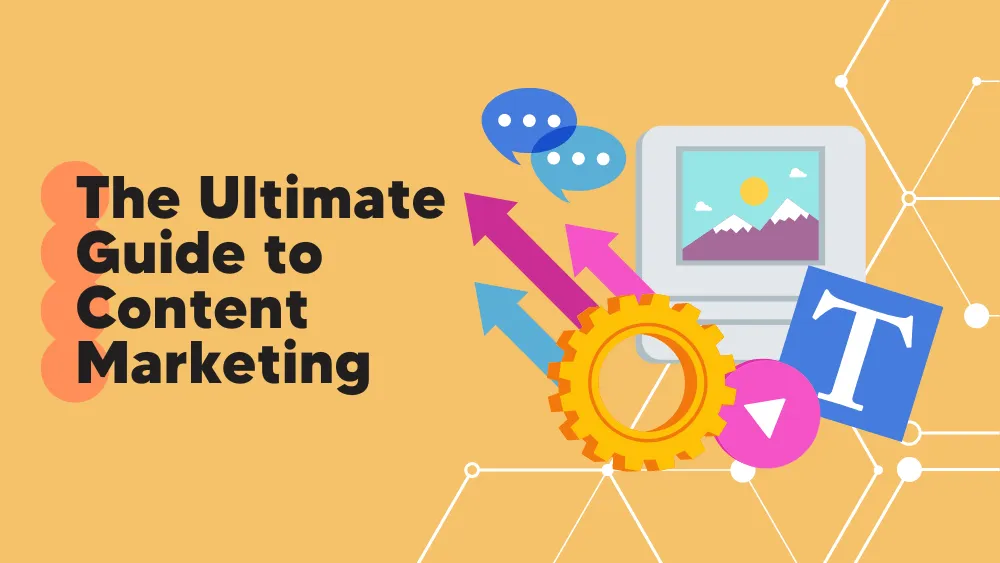Table of Contents
What is SEO optimization?
A fundamental question, first: what does “SEO” mean? SEO means “Search engine optimization,” an essential part of any digital marketing strategy. It involves optimizing your website and its content to rank higher in search engine results pages (SERPs) for targeted keywords and phrases. SEO can help improve your website’s visibility, drive more traffic, and increase conversions and revenue.
One of the most critical aspects of SEO is, of course, content creation. High-quality content optimized for search engines can help you rank higher in SERPs and attract more traffic to your website. But creating content for SEO optimization requires more than just writing high-quality blog posts. It would help if you also considered metadata, multimedia, social media promotion, influencer outreach, guest posting, and email marketing. In this article, we’ll explore these important factors and provide tips for creating perfectly optimized content for SEO.
Keyword Research
Before you start creating content, you need to conduct keyword research. This is a crucial part of the work and requires maximum care! To give a short definition, keyword research identifies the keywords and phrases your target audience is searching for in search engines. By conducting keyword research, you can uncover valuable insights into what your target audience is specifically searching for and use that information to create fully optimized content for search engines. Let’s go straight to the point by showing the main steps to conducting effective keyword research:
- Step 1: Identify your target audience
Before you start conducting keyword research, it’s essential to understand who your target audience is. Who are you trying to reach with your content? What are their interests, needs, and pain points? Understanding your target audience will help you identify the keywords they’re most likely to use when searching for information online.
- Step 2: Brainstorm potential keywords
Once you’ve identified your target audience, it’s time to start brainstorming potential keywords. Begin by creating a list of relevant topics for your business or industry. Then, use a tool like Google’s Keyword Planner to generate a list of potential keywords related to those topics. Remember to include more specific long-tail keywords and targeted phrases that people may use when searching for information.
- Step 3: Analyze keyword search volume and competition
With a list of potential keywords in your hands, it’s time to analyze their search volume and competition. Search volume refers to the number of times a keyword is searched for in a given time. High search volume keywords are more competitive, meaning many other websites will likely target those keywords. Low search volume keywords may have less competition and less search traffic (therefore, you need to find a good balance between them). Analyzing keyword competition will help you determine which keywords are most valuable to target in your content.
- Step 4: Choose your target keywords
Based on your analysis of search volume and competition, you can now choose the keywords that are most relevant to your target audience and have the highest potential value. These will be the keywords that you target in your content.
- Step 5: Optimize your content for your target keywords
Once you’ve chosen your target keywords, it’s time to optimize your content for those keywords. Include your target keywords in your page title, meta description, headers, and throughout your content (spread it everywhere from start to end). You can use various keyword research tools like, as we said before, Google Keyword Planner (one of the most used and recognized), Ahrefs, SEMrush, and Moz Keyword Explorer to identify relevant keywords and phrases.
Once you’ve identified the best keywords, you can use them to optimize your content. Include your target keywords in your blog post titles, meta descriptions, headers, and content. But beware: don’t overdo it. “Keyword stuffing” can also hurt your SEO efforts, so make sure to use your keywords naturally and strategically.
Optimize Metadata
Metadata is the information that appears in search engine results pages (SERPs) and helps search engines understand your website’s content. It would be best to optimize your metadata to ensure your website appears in relevant search results.
There are three primary types of metadata that you need to optimize:
- Title tags: The title tag is the text that appears at the top of a web page’s browser window and is also the title that appears in search engine results. Include your target keywords in your title tag, and keep it concise (let’s say around 60 characters).
- Meta descriptions: The meta description is the brief summary of your web page that appears in search engine results. Ensure you include your target keywords and make them compelling (around 150 characters).
- Header tags: Header tags (H1, H2, H3, etc.) are used to structure your content and help search engines understand the hierarchy of your content. Make sure to include your target keywords in your header tags.
Use Multimedia
In today’s digital age, multimedia has become essential to online content creation. You can enhance your content’s overall quality, appeal, and engagement level by using multimedia such as images, videos, and infographics. However, did you know multimedia can also help optimize your content for search engines? Sure, it can! Here are some reasons why:
- Firstly, multimedia can improve the user experience of your website, making it more appealing and easier to navigate. This, in turn, can lead to longer dwell times, lower bounce rates, and higher click-through rates, all of which are positive signals that can boost your search engine rankings.
- Secondly, multimedia can also make your content more shareable and linkable, leading to more backlinks, social media shares, and increased visibility. This can help improve your domain authority and overall search engine ranking.
- Finally, using multimedia can also help you target specific keywords and phrases, improving your content’s relevance and contextual understanding. Optimizing your multimedia files with alt tags, descriptions, and captions can help search engines better understand the content of your website and consequently improve its ranking.
So, whether it’s through images, videos, or infographics, using multimedia in your content can help optimize your website for search engines, increase engagement and shares, and ultimately boost your search engine rankings. So, pay attention to the power of multimedia in your SEO strategy!
Promote Your Content
Congratulations, you’ve successfully optimized your content for SEO! You’ve identified the right keywords, crafted compelling meta descriptions, and ensured your content is correctly structured for search engines. However, SEO is only one piece of the puzzle. The ugly truth is that even the most well-optimized content will only do a little for your business if people know about it. So, to truly reap the benefits of your hard work, you need to promote your content. Here are some excellent strategies to consider:
Share on social media
Once your content is live, please share it on your social media channels; Facebook, LinkedIn, Instagram, Twitter, etc. Craft attention-grabbing headlines and visuals to entice people to click through to your site. If you have a large following, consider using paid social media ads to amplify your message.
Reach out to influencers
Identify influencers in your industry and ask them if they’d be willing to share your content. Personalize your outreach and explain why your content would be valuable to their audience. This should generate interest in what you offer.
Send an email blast
If you have a mailing list (and if not, you must be willing to create one), send an email blast announcing your new content. Use a catchy subject line to grab attention, and include a summary of what the content is about to entice people to click through.
Repurpose your content
Turn your blog post into a video, podcast, or infographic to reach new audiences on different platforms. For example, you could post a video version of your blog post on YouTube or share an infographic on Pinterest.
Participate in online communities
Join online communities in your industry and participate in discussions. Be helpful and provide value. Special tip: include a link to your content when relevant to the conversation.
Consider paid advertising
If you have the budget, consider using paid advertising to promote your content. Options include search engine ads, display ads, and social media ads.
Monitor and adjust
Keep track of your content’s performance and adjust your promotion strategies accordingly. Pay attention to metrics like traffic, engagement, and conversions to see what’s working and what’s not. The more data you have, the better the decisions you can make.
Best SEO practices to follow
Finally, it’s essential to follow best practices when creating content for SEO optimization. The following is a list of best practices to always keep in mind.
- Write high-quality, helpful content that provides value to your target audience. Your content should be well-written, informative, and engaging, with a clear structure and flow. Aim to provide unique and original content not easily found elsewhere on the web. Use a clear, concise writing style and avoid jargon and technical terms (your content must be easy to understand).
- Use internal links to help search engines understand the structure of your website. In addition to optimizing your content, it’s really important to build internal and external links to your content. Internal links can help search engines understand your website’s structure and improve users’ navigation. In contrast, external links can help establish your website as a credible source of information and make it an authority in your field (very useful in the long term).
- Optimize your content structure, which can also impact your SEO. Aim to create content that is easy to read and understand, with clear headings and subheadings that use keywords where appropriate. Use bullet points and numbered lists to break up your content and make it more scannable.
- On the more technical side, make sure your website is mobile-friendly and has a fast-loading speed. And don’t forget that, besides the content you write, and images can also impact your SEO.
- Lastly, monitor your website’s analytics and adjust your SEO strategy accordingly.
It is clear, at this point, that creating content for SEO optimization requires more than just writing high-quality blog posts. Conducting keyword research and following best practices can help increase your website’s visibility and drive more traffic to your website. SEO optimization is a critical first step to ensure that your content is discoverable by search engines: that’s the goal! However, promoting your content is equally important to ensure your target audience sees it. Using strategies like social media sharing, influencer outreach, and repurposing your content can drive traffic and engagement to your site, ultimately leading to more conversions and business success!



